Development of the 8K ecosystem continues with Japan leading efforts of course. However, with the focus squarely on adding more pixels, the initiative is looking increasing out of step with other efforts focused on high dynamic range, which was a major theme at NAB. In addition, while the 8K displays at the event show no evidence of pixels, the contrast is always low – much lower than standard dynamic range TVs, which leads to a compromised image quality – in my opinion. While there is still time to improve these displays, the initiative may have to also embrace HDR to remain competitive with the 4K HDR trend. (Actually, the Super Hi-Vision is intended to support 12 bit grey scales which would support HDR – Man. Ed.)
In one of the symposium sessions, we heard an update from Hitanari Nakada on the status of the NexTV-Forum initiative in Japan, which is spearheading the move to 8K. This group was formed in May 2013 with 21 founding companies and has now grown to 113 companies. Its mission is to promote UHDTV (4K and 8K), manage the operation of the trial broadcasts and support the standardization efforts in this area. The UHDTV roadmap is shown n the graphic below.
As can be seen, Japan plans to move from trial broadcast of 4K UHD content in 2014 to commercial service in 2015. That includes delivery by satellite, cable and IPTV methods. Content is being developed primarily by one entity, Channel 4K” but offered by two channels over the distribution methods mentioned above. This is a free-to-air service that broadcast 7 hours/day on weekdays and 12 hours/day on weekends and holidays to compatible 4K TVs. Sharp now offers a 4K recorder with a built-in tuner and Sony has a 4K media player with a built in tuner. Toshiba offers a 4K TV with a built-in tuner.
Channel coding used the DVB-S2 format at 40 Mbps while video coding is done using HEVC at 35 Mbps. The frame rate is 60p and a 2020 color gamut is used. Audio coding is MPEG-2 AAC ADTC at 50 Kbps.
For 8K UHD, the first satellite-based trial broadcasts are planned to begin in 2016. By 2020, all three methods are supposed to be available to broadcast the 2020 Olympics to be hosted by Japan.
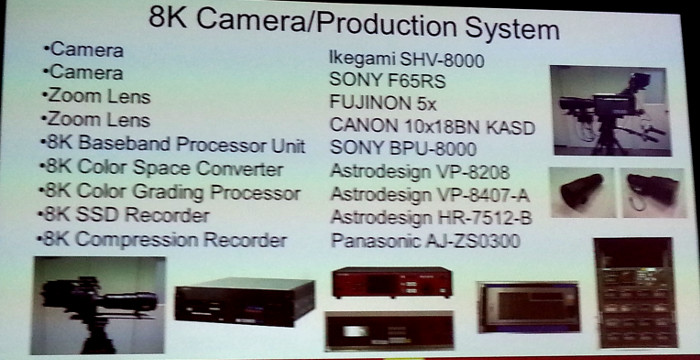
Nakada-san showed a chart with a summary of some of the 8K production equipment that is now available. While he noted the Ikegami camera for studio production, we also learned that Hitachi now has an Electronic News Gathering (ENG) camera that is 8K resolution for sale too. The Sony F65 fills out the space with a cinematic grade offering. Astro Design also offers an 8K camera for about $300K.
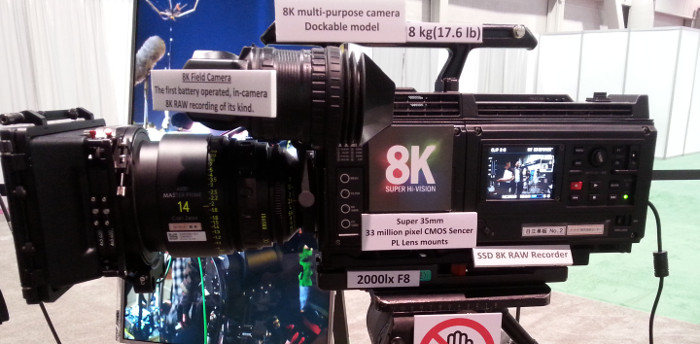
Astro Design was also showing their new 55” 8K display on the trade show floor, which will likely sell in the $200K range. It uses an IPS LCD panel from Panasonic that features a contrast ratio of only 1400:1 and brightness of 350 nits. Using a white LED, the color gamut is 81% of 2020, but 99% of the P3 color gamut. Availability is not clear yet, however.
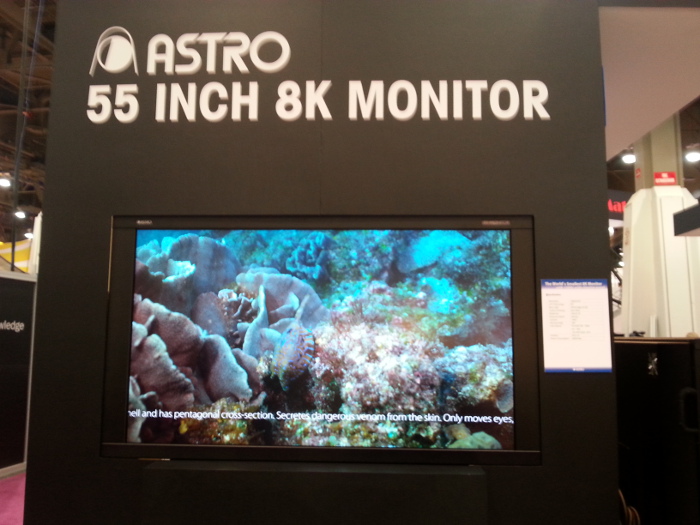
In the NHK 8K booth the world’s smallest 8K display was also being shown. This was very dim and not very useable. This is an OLED color by white display that was developed in cooperation with Semiconductor Energy Labs (SEL). I believe this was first shown at SID DisplayWeek in May 2014.
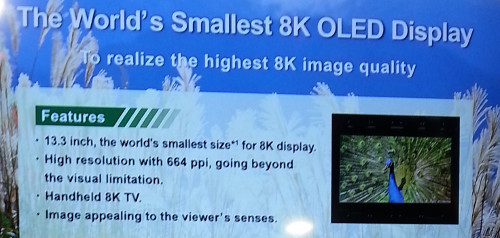
For broadcast, the plan is to use a satellite system to start encoding using 16APSK modulation at 100 Mbps, with video encoding using HEVC at 60 fps. One 8K channel with be established with a second derived from 2-3 4K channels. Ancillary data and information can be combined with the 4K video image to create an 8K image by means of MPEG Media Transport (MMT-TLV) and an HTML5 IP layer (photo). Audio will feature a 22.2 channel system encoded with MPEG-4 AAC, MPEG-4 ALS.
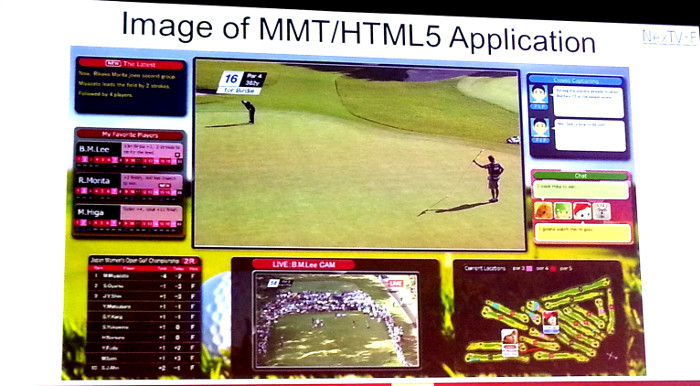
Our own Aldo was also at NAB and looked at the broadcast side of the move to Super Hi-Vision (NHK Discusses UHD Roadmap)

